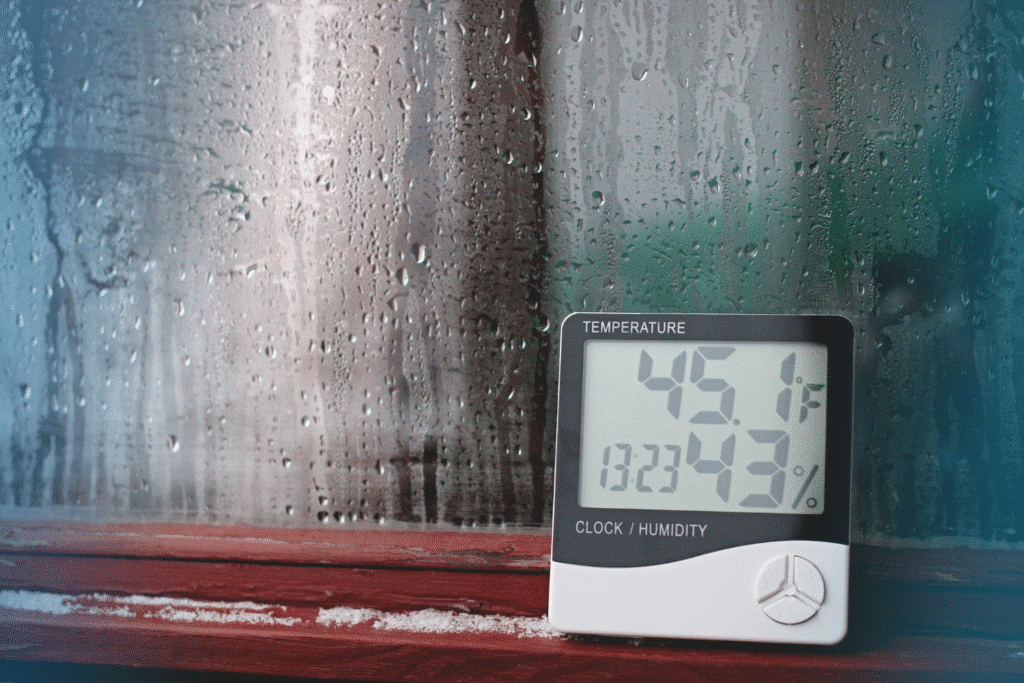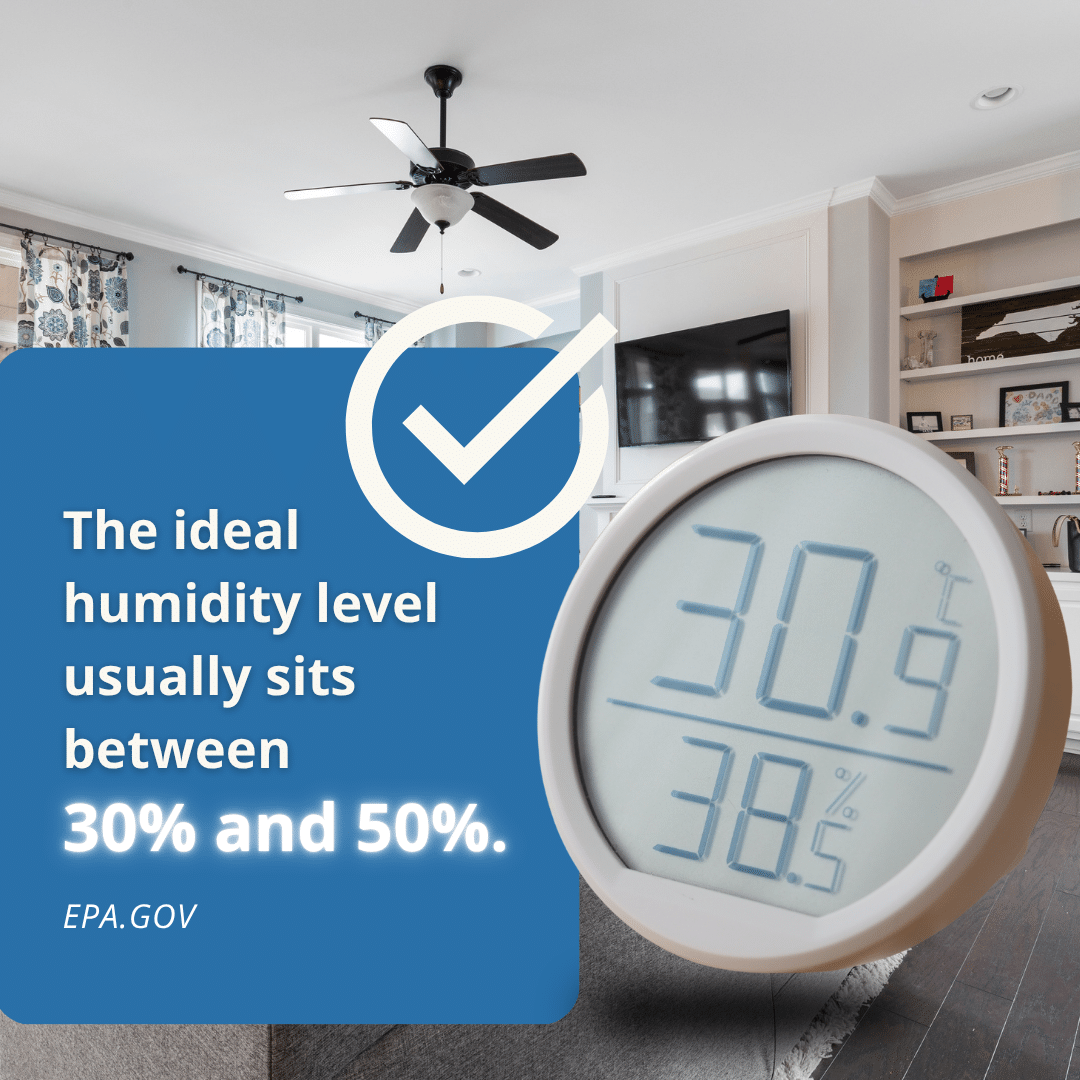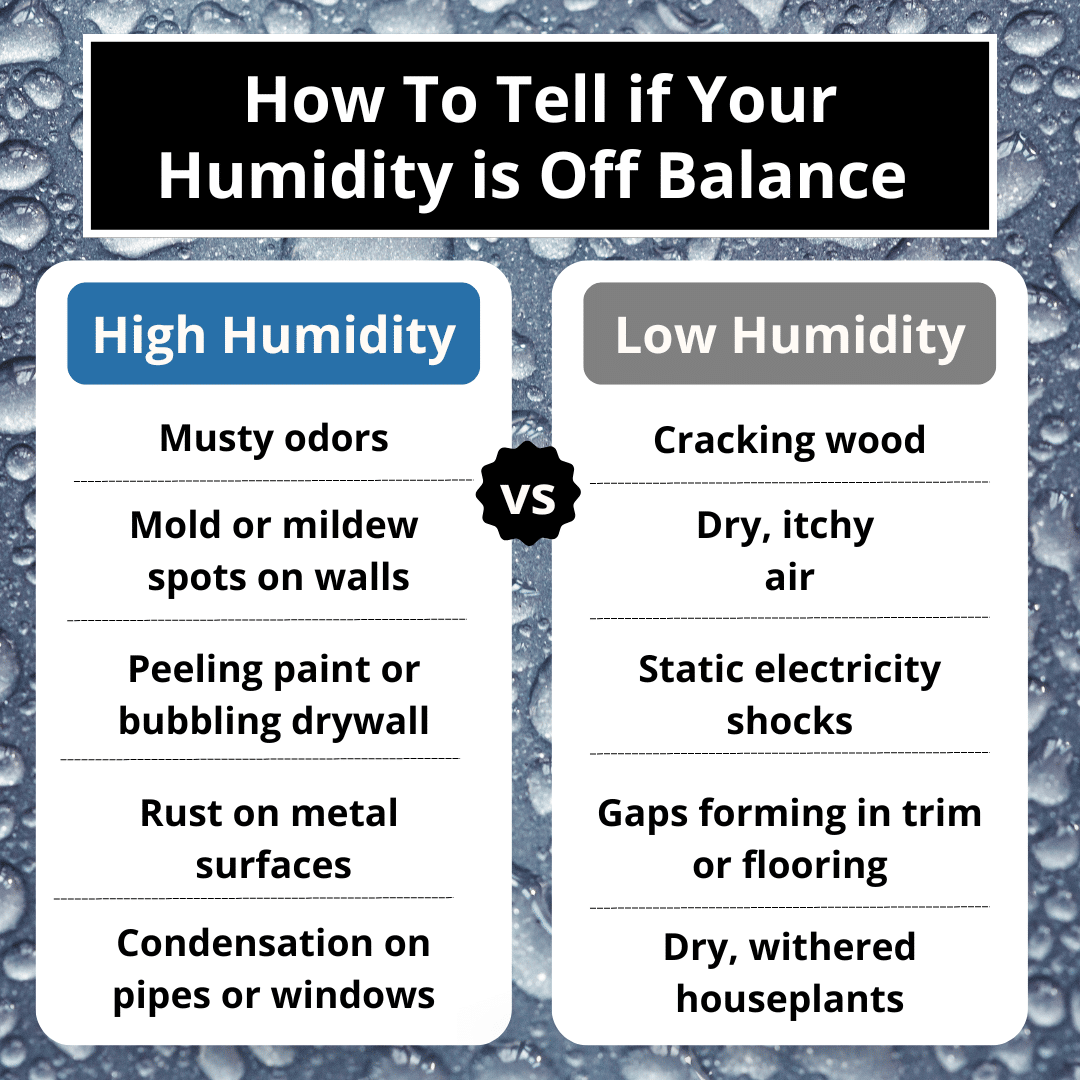
Simple Tips to Keep Ideal Basement Humidity Levels
If your basement ever feels damp, musty, or smells like old socks, there’s a good chance humidity is the reason. The ideal basement humidity helps protect your home from mold, damage, and uncomfortable air. Many homeowners don’t realize how moisture affects air quality and even their home’s foundation.
In this guide, we’ll walk you through what the ideal basement humidity level is, why it matters, and how you can easily maintain it year-round.
Understanding the Ideal Basement Humidity
The ideal basement humidity level usually sits between 30% and 50%.
This range keeps the air comfortable while preventing mold, dust mites, and mildew from growing. Once humidity goes above 60%, your basement becomes the perfect environment for mold to thrive.
Too little humidity, below 30%, can cause wood to dry out, paint to peel, and static electricity to increase. In other words, balance is key.
According to the Environmental Protection Agency (EPA), maintaining humidity between 30% and 50% not only improves comfort but also protects your home’s structure. Keeping your basement in this range helps stop water damage before it starts.
Why Basement Humidity Levels Fluctuate
Basement humidity changes for many reasons. Some are seasonal, while others come from hidden problems around the home.
Common causes of humidity changes include:
- Poor ventilation or closed vents: Many basements have minimal airflow, which allows humid air to sit and collect on cool surfaces. If vents are blocked or the HVAC system isn’t reaching the basement, humidity can rise quickly.
- Leaky pipes or fixtures: Leaks often go unnoticed in basements because they’re behind walls, under insulation, or near appliances. These hidden leaks also create perfect conditions for mold to grow.
- Cracks in basement walls or floors: Hairline cracks in concrete can let groundwater seep through, especially during heavy rain or when the soil around the foundation becomes saturated. As water evaporates, it raises humidity levels and can cause discoloration, efflorescence (white mineral deposits), and even musty odors.
- Unsealed windows or door frames: Poorly sealed basement windows and doors allow warm, moist outdoor air to enter. In summer, this warm air meets cooler basement surfaces, creating condensation. Over time, this cycle can warp wooden frames or cause water damage around window wells.
- Groundwater seeping through foundation walls: Landscaping that traps water or directs runoff toward your house adds constant moisture pressure against the basement walls. Dense plants or mulch that sit too close to the home can also hold moisture and increase humidity indoors.
Humidity also shifts with the weather. During summer, warm air holds more moisture, so basements often feel damp. In winter, the air outside is dry, which can lower indoor humidity too much.
Regular home inspections can help uncover leaks, moisture intrusion, or poor airflow that contribute to these fluctuations. A trained inspector can also identify early warning signs before they lead to costly repairs.
How to Measure Humidity in Your Basement
To control humidity, you need to know your starting point. Measuring basement humidity is simple and inexpensive.
Here’s how to do it:
- Use a digital hygrometer is an affordable device that measures relative humidity (RH).
- Place it in the center of the basement, away from windows or vents.
- Track readings daily for a week to identify trends.
- If levels consistently exceed 50%, take action to reduce moisture.
For tech-savvy homeowners, smart home sensors can send humidity alerts straight to your phone.
Pro Tip: If your readings stay high even after basic fixes, it may indicate a deeper issue, such as hidden leaks or foundation cracks. In that case, schedule a mold inspection with Q&A Home Inspections for expert insight.
Simple Tips to Maintain Ideal Basement Humidity Levels
Keeping your basement dry doesn’t have to be complicated. Small, consistent steps go a long way.
Easy ways to maintain ideal humidity:
- Use a dehumidifier: Choose one rated for your basement’s size. Empty it regularly and clean the filter every few weeks.
- Seal foundation cracks: Use epoxy or waterproof sealant to prevent water intrusion.
- Improve airflow: Open vents or install an exhaust fan to keep air circulating.
- Insulate cold pipes and walls: This reduces condensation buildup.
- Check gutters and downspouts: Make sure they direct water away from your home’s foundation.
- Maintain proper grading: Ensure the ground slopes away from the house to avoid pooling water.
Consistent upkeep helps you avoid major humidity issues before they turn into bigger problems.
Seasonal Tips for Managing Basement Humidity
Basement humidity management changes with the seasons. What works in summer may not work in winter.
Summer Tips:
- Keep dehumidifiers running regularly.
- Seal windows to prevent warm, moist air from entering.
- Clean AC filters monthly to improve air circulation.
Winter Tips:
- Use a humidifier if your basement air becomes overly dry.
- Watch for condensation on cold surfaces and insulate those areas.
- Keep vents open to maintain consistent airflow.
Scheduling a seasonal home inspection can help ensure your basement stays balanced year-round. Inspectors can identify subtle changes caused by shifting weather or drainage issues.
Signs Your Basement Humidity Is Too High or Too Low
How can you tell if your humidity is out of balance? Watch for these clues.
If your basement’s humidity climbs above 60%, moisture begins to collect on cool surfaces like pipes, walls, and windows. This damp environment becomes a breeding ground for mold, mildew, and bacteria.
Signs of high humidity:
- Musty odors: This is often the first warning sign. Mold and mildew release gases that create a distinct smell, even before visible growth appears
- Mold or mildew spots on walls: Mold often starts in hidden areas. This includes behind insulation, under carpets, or along baseboards. Even small patches can spread quickly if not addressed.
- Peeling paint or bubbling drywall: High moisture weakens paint adhesion and damages drywall or plaster surfaces.
- Rust on metal surfaces: Tools, shelving, or HVAC components stored in the basement can rust in humid conditions, leading to costly replacements.
- Condensation on pipes or windows: You might see water droplets on concrete walls, windows, or metal fixtures. Over time, this condensation can soak into drywall or wood.
Why it’s dangerous:
Excess moisture doesn’t just harm materials, it can affect your health. Mold spores can irritate allergies, asthma, and respiratory systems. Plus, consistent high humidity can damage your foundation by softening concrete or promoting cracks through freeze-thaw cycles.
Low humidity may not seem like a big deal, but when it drops below 30%, it can create a whole different set of issues, especially during the winter months. Dry air pulls moisture from everything it touches, including wood, paint, and even your skin.
Signs of low humidity:
- Cracking or splitting wood: Wood framing, floors, or furniture can contract, leaving gaps or splits.
- Dry, itchy air: Air that’s too dry pulls moisture from your body, making the environment uncomfortable.
- Static electricity shocks: Frequent static shocks or clingy clothes are signs of overly dry air.
- Gaps forming in trim or flooring: These small spaces can widen as materials shrink, reducing energy efficiency.
When you spot these signs, take immediate action. Addressing humidity early protects your home’s structure and indoor air quality.
Why it’s dangerous:
Low humidity can cause long-term wear and tear on wood structures and create tiny cracks in concrete over time. It also affects how well your home holds heat, often causing your HVAC system to work harder and increase energy bills.
Long-Term Solutions for Humidity Control
For homeowners facing constant moisture issues, short-term fixes may not be enough. Investing in long-term solutions can save thousands in future repairs.
Consider these permanent options:
- Waterproofing systems: Interior or exterior waterproof coatings protect against groundwater seepage.
- Vapor barriers: Plastic or foil layers installed behind walls help block moisture from entering.
- Sump pumps: Automatically remove water buildup from around your foundation.
- French drains or improved yard grading: Redirect water away from the home effectively.
While these upgrades come with a higher upfront cost, they offer years of protection. However, before investing, it’s smart to pinpoint the root cause of moisture buildup.
How Home Inspectors Help Identify Moisture Issues
Home inspectors don’t just look for visible signs of water. They use specialized tools to detect moisture you can’t see.
Common tools used by inspectors:
- Moisture meters: Measure how much water is inside walls or floors.
- Infrared cameras: Spot hidden leaks or insulation gaps.
- Air quality sensors: Detect mold spores or damp air circulation.
By hiring a certified inspector, you can get a clear picture of your basement’s health. Inspections are especially valuable if you’re buying, selling, or remodeling a home. They ensure that any hidden issues are caught early.
Related Questions
What should basement humidity be in winter vs. summer?
Aim for around 40% in winter and 50% in summer. This balance prevents condensation and mold growth.
Can high basement humidity cause mold upstairs?
Yes. Moist air rises through your home, spreading mold spores and musty odors to upper floors.
Do I need a dehumidifier if my basement is unfinished?
Yes. Even unfinished basements with drywall can trap moisture and cause structural damage over time.
When to Call a Professional
If you’ve tried DIY methods and your basement still feels damp or smells musty, it’s time to call a professional. Hidden water leaks, foundation issues, or poor ventilation can only be confirmed through a detailed inspection.
You should contact an inspector if:
- You notice persistent mold or mildew
- Dehumidifiers aren’t keeping humidity under control
- Your foundation shows cracks or water stains
- The problem returns after cleaning or sealing
A trusted inspector from Q&A Home Inspections can pinpoint the source of moisture and guide you toward practical, lasting solutions.
Conclusion
Maintaining the ideal basement humidity level is one of the simplest ways to protect your home from costly damage. With regular monitoring, seasonal adjustments, and smart long-term planning, you can enjoy a basement that feels dry, fresh, and safe.
Whether you’re noticing dampness, condensation, or mold growth, it’s never too early to take action. Contact Q&A Home Inspections today to schedule a professional moisture assessment and keep your home in its best condition year-round.

